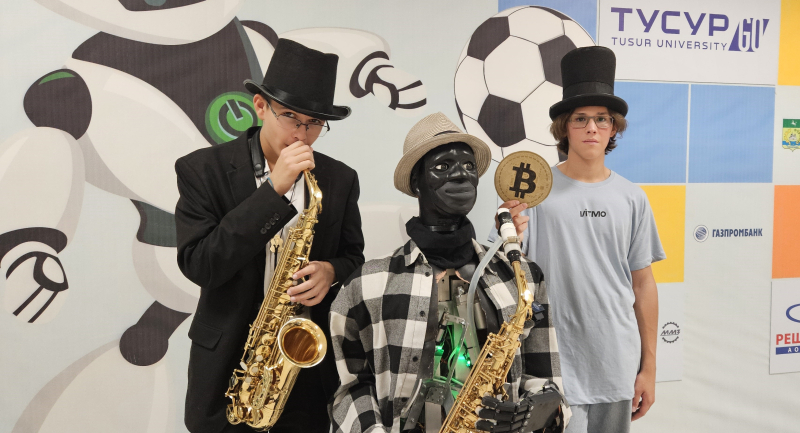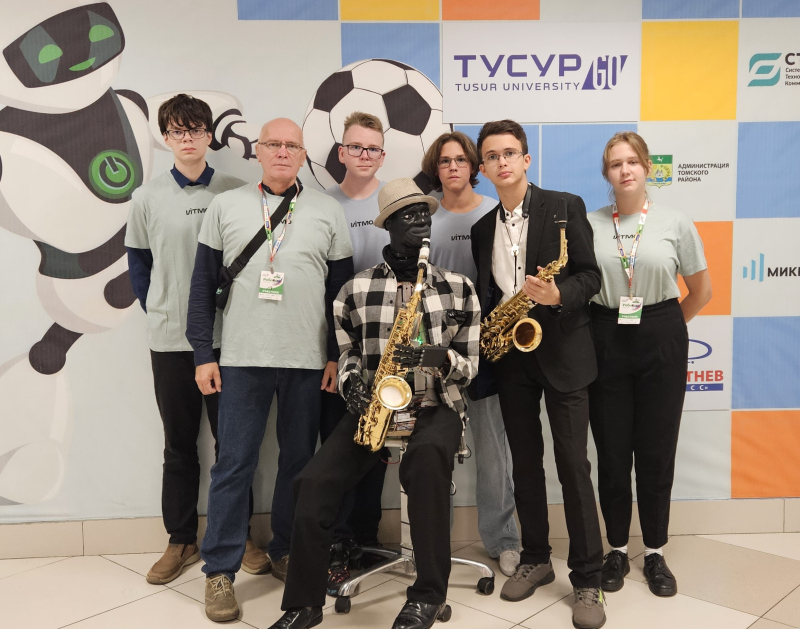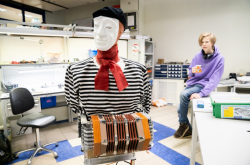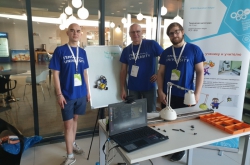The robot musician plays one of the most challenging instruments in terms of sound production, i.e. the saxophone. For their project, the developers devised not just a new technique for pressing the keys, but also a novel method to direct air into the instrument. As a result, the robot “learned” to push air into a saxophone using its lips, just like a human would. Aside from that, the robot musician, like a genuine artist, moves its hands, legs, and head to music beats and smiles, expressing its feelings to the audience through its facial expressions.
Each part of Robby Brown’s body is operated by a separate controller, with the main one sending commands to the others to switch between animation and performance modes. In the case of its air supply system, which has several power levels for different tones, the main controller must recognize the needed level and instruct other controllers to modify the power level and put in more/less air into the instrument. The robot is also equipped with a computer vision technology, which can interpret movements of people in the audience and hence change the robot’s behavior.
A team of three school and two university students from ITMO's Youth Robotics Lab completed the project in a year and a half.
“We have students with different backgrounds, including seasoned and novice designers. This project involved five of our students; each was in charge of a different aspect of work. Artem Navrotskiy is the person behind the idea. He has been playing the saxophone for nine years; he knows the instrument well and joined our laboratory to make his first steps in robotics. Artem was the one who came up with the air supply system. A saxophone has a reed that vibrates at different frequencies when air is blown through it. We had been doing tests for six months to make that happen. Another team member, Stepan Muravyov, developed 3D models, while Alexander Novoselov “trained” the robot to move its limbs and smile. The team’s leader, Alexander Syrkovsky, worked on electronics and programming for the robot’s movement. Anastasia Ponimatkina designed the robot’s assistant – a robot hat – and choreographed the show. The robot’s name was generated by AI,” explains Igor Lositsky, the project’s leader and the head of ITMO's Youth Robotics Lab.

ITMO team with Fantastic Robby Brown. Photo by Igor Lositsky
The project’s debut was at the final tournament of RoboCup Russia where Fantastic Robby Brown and Artem Navrotskiy performed several compositions that were well welcomed by the audience. The developers plan to involve the newly-made robot musician in concerts and theater performances along with other robots created at the laboratory.
“Before Robby Brown, there were Seldon (the ukulele), ELSA (the flute), Iron Henry (the balalaika), and Robert Robotecky (a gyro scooter musician). During their performances, they play their instruments, move, and express different emotions that evoke a response from their audience. All of them have their distinct looks. This is hard work. Making anything new requires trial and error, but this is how students grow into true professionals,” notes Evgenii Zavarin, the team’s coach and employee at ITMO's Youth Robotics Lab.
RoboCup championships have been conducted worldwide since 1993. This year's tournament, held for the eighth time in Tomsk on September 13-15, brought together more than 400 participants. Teams from ITMO's Youth Robotics Lab have competed in the tournament since 2017, repeatedly winning prizes along the way.
The project by ITMO's Youth Robotics Lab is implemented in collaboration with Presidential Physics and Mathematics Lyceum No. 239.





